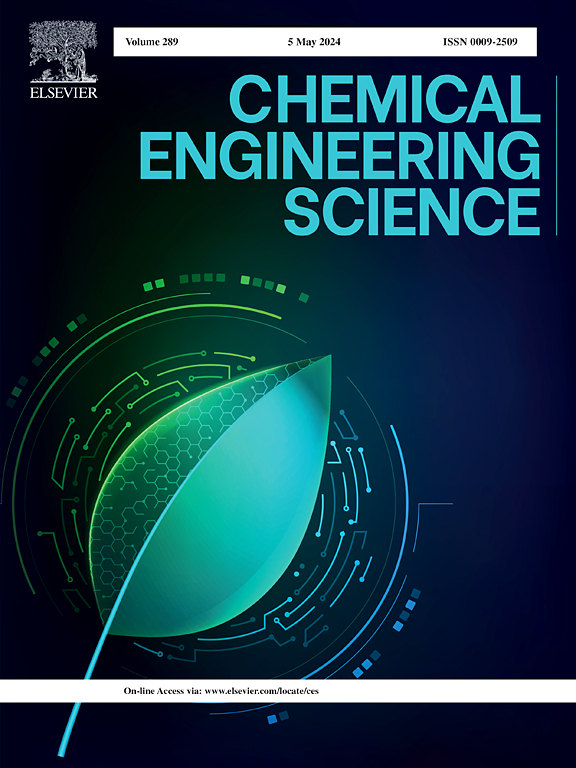The selective adsorption mechanism of an amino acid surfactant in the flotation separation of fluorite from calcite
IF 4.1
2区 工程技术
Q2 ENGINEERING, CHEMICAL
引用次数: 0
Abstract
The mineral processing industry has faced challenges in separating fluorite/calcite using flotation because of the similarity of surface properties and the presence of surface transformations. In this paper, a novel dicarboxylic acid-based amino acid surfactant, 2-decanoylamino-pentanedioic acid (DPA), was used for the flotation separation of fluorite from calcite. The DPA adsorption behaviors on fluorite/calcite surfaces showed significant differences: the chemical reaction between the carboxyl group’s O atoms and Ca sites on the fluorite surface caused a significant DPA adsorption; in contrast, DPA formed a DPA-Ca precipitates with Ca2+ in the slurry in advance and then achieved weaker adsorption by interacting with O sites on calcite surface. In addition, thanks to its “double-headed” structure, there are more adsorption configurations of DPA on the mineral surface, providing different levels of hydrophobicity to further magnify fluorite/calcite floatability with different floatability. Consequently, DPA showed excellent collecting ability and selectivity for fluorite, and the recovery and grade of CaF2 in the froth product of artificially mixed mineral flotation reached 85.85 % and 59.13 %, respectively, in a neutral pH and without adding frothers and inhibitors. Our study elucidates the adsorption mechanism of DPA on fluorite/calcite surfaces, which offers an innovative perspective on fluorite collector design and development, contributing to the effective and environmentally friendly exploitation of mineral resources.


氨基酸表面活性剂在萤石与方解石浮选分离中的选择性吸附机理
由于萤石/方解石的表面性质相似且存在表面转化,矿物加工行业在使用浮选法分离萤石/方解石时面临着挑战。本文将一种新型二羧酸基氨基酸表面活性剂--2-癸酰氨基戊二酸(DPA)用于浮选分离萤石和方解石。DPA 在萤石/方解石表面的吸附行为存在显著差异:羧基的 O 原子与萤石表面的 Ca 位点发生化学反应,产生了明显的 DPA 吸附作用;相反,DPA 事先与矿浆中的 Ca2+ 形成 DPA-Ca 沉淀,然后与方解石表面的 O 位点发生作用,吸附作用较弱。此外,由于其 "双头 "结构,DPA 在矿物表面有更多的吸附构型,提供了不同程度的疏水性,进一步放大了萤石/方解石的可浮性。因此,DPA 对萤石表现出了极佳的收集能力和选择性,在中性 pH 和不添加起泡剂和抑制剂的条件下,人工混矿浮选的泡沫产物中 CaF2 的回收率和品位分别达到了 85.85 % 和 59.13 %。我们的研究阐明了 DPA 在萤石/方解石表面的吸附机理,为萤石捕收剂的设计和开发提供了创新视角,有助于矿产资源的有效和环保开发。
本文章由计算机程序翻译,如有差异,请以英文原文为准。
求助全文
约1分钟内获得全文
求助全文
来源期刊

Chemical Engineering Science
工程技术-工程:化工
CiteScore
7.50
自引率
8.50%
发文量
1025
审稿时长
50 days
期刊介绍:
Chemical engineering enables the transformation of natural resources and energy into useful products for society. It draws on and applies natural sciences, mathematics and economics, and has developed fundamental engineering science that underpins the discipline.
Chemical Engineering Science (CES) has been publishing papers on the fundamentals of chemical engineering since 1951. CES is the platform where the most significant advances in the discipline have ever since been published. Chemical Engineering Science has accompanied and sustained chemical engineering through its development into the vibrant and broad scientific discipline it is today.
 求助内容:
求助内容: 应助结果提醒方式:
应助结果提醒方式:


